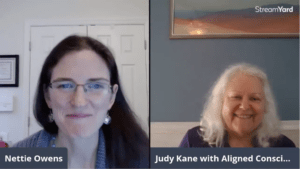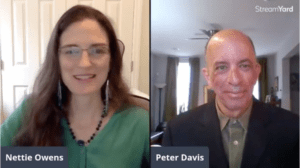What do businesses need to know about finding new clients on LinkedIn?
That’s a good question. I think the main thing that a lot of people don’t ask themselves and that they should is: Philosophically, what do we want to stand for? What is our method going to be to find leads on LinkedIn?
Because, and this applies to marketing in general, there are many methods out there. And most methods out there work – one way or another. For example, if somebody tells you that you should just do video – focus on video.
It’s interesting because I posted about this today, and it’s just a pure coincidence. But you could, for example, just do video and try to get a huge reach. That’s possible. And it may work for you – especially if you’re talented on video. Or you can also go with automation – that is possible – and you will get leads from that. But the question is whether you agree with this philosophically.
Or you could do what is more my route and what I teach – which is to start conversations in a natural way and build some rapport. And then, when you see that they have a potential problem that you could help them with, simply offer them a 15-minute conversation – just like you would if you were at a networking event. It may not be the main driver of your leads, but that is my method.
And you as a business need to decide which of those methods do you align with philosophically? And once you’ve made this decision, you need to invest the time to master it.
I just see too many people saying, “Yeah, I dabbled with this, and I dabbled with that, and it didn’t work.” I think it didn’t work because you didn’t give it enough time.
The main thing that I would recommend people think about is what philosophically aligns with them personally.
“It’s essential to put time into any particular methodology you choose. Consistency and putting in the effort will yield results.”
With my method, you can literally get a call tomorrow. So, I spent a lot of time doing social selling today. And I booked two calls for tomorrow and one for the day after tomorrow. And that was because I already know how to do this. If you’re new, you may need a little longer. But theoretically, if you’re a fast learner, and if you already have experience in approaching strangers in any other setting in the real world, you’re going to have a much easier time.
Because I’m just taking what works in the real world and translating it online. Start having a friendly conversation and then ask them for a quick call. And that can work. You can get the next call booked tomorrow. But it may take you a little while before you get the hang of it.
“It’s important to recognize that the virtual space is just an extension of the non-virtual space.”
The other day I said to a prospect: Imagine you are at a networking event and you saw somebody that could be a possible client for you. What would you ask them? What would you say to them? And he said, “Well, I would just walk up there and just tell them about my product.” But no – you wouldn’t do that – or the person would run away. You would ask them, “Do you like the tuna sandwiches?” or “Did you like the last speech that you saw?” You would ask those situational questions.
What I hear from my network is that the reach on their LinkedIn content is going down. Is that true?
I generally think that the content party is slowly coming to an end.
For example, on LinkedIn, you have a significantly wider reach than you would have on other social platforms. Because LinkedIn is not yet as saturated as, for example, Facebook, you still can get above-average organic reach on LinkedIn, but it’s declining.
And I see this, and I hear this, across the board from anybody who’s in that space – so that is a problem.
But the question itself implies that content is the main source of leads. And I hear this from many people, too. They say, “Oh, my God, I’m terrified that my reach is going down.” And I think they shouldn’t be.
Let’s say you have a following of 20,000, your biggest bang for the buck will be from actually starting conversations. The content then plays only a supportive role. So, if you start 15 conversations every day, then you’re going to get outstanding results. If the content declines by 30% over the next year – it doesn’t matter all that much. It’s really the conversations that you start that matter.
“Using LinkedIn to start conversations with people is where the real value is for lead generation. Your content can be good, but if you’re not talking with people – is it really helping?”
This ties in with what you talk about in your marketing, which is “Cybernetic Social Selling” – what is that?
Yes, we’ll call it “cybernetic social selling” because cybernetics is the science of outcome-driven goal direction. And it means that you actually are trying to stay human in the conversation, but at the same time, you are pursuing a goal. What is that goal? Getting to a 15-minute conversation or getting them to agree to have a quick phone call with you.
And there are three stages. The first is rapport building. Then it’s exploration and seeing whether they are in the market for your service, and if they are, offer them the call. You just have to be goal-directed in order to get to that point.
3 Action Steps
- Start natural conversations with people on LinkedIn to build rapport and see if they potentially need your products or services.
- Understand that the content you create is important but not as important as the conversations you have with potential clients.
- In order to sell your product or service, build rapport, then explore if the potential client is in the market for your products or services, and then ask for a 15-minute call with them to talk.
Connect with Michal Bohanes and find out more about his Alpha Lead Academy.
Please comment below. I would love to hear from you.














No comments yet.